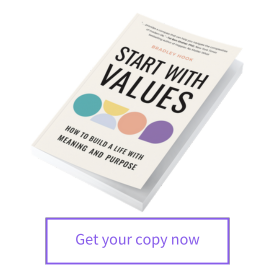We all know what it is like to sacrifice wellbeing for productivity. While this is occasionally necessary to achieve critical goals, the workplace should support employees with rhythms and tools to enable recovery. High-performance athletes know very well that performance requires care. In this context, wellbeing is not just a luxury—it’s a necessity. Bradley Hook, a leading keynote speaker and an advocate for workplace health, offers expert guidance on integrating wellbeing practices into the fabric of organizational culture, ensuring both employee satisfaction and enhanced productivity.
The Importance of Wellbeing in Modern Workplaces
Wellbeing at work transcends physical health; it encompasses mental, emotional, and social health. Bradley Hook stresses the significance of holistic wellbeing, pointing out that employees who feel well taken care of are more engaged, less prone to burnout, and more likely to contribute positively to their teams.
Brad said, “In my experience working with hundreds of organisations, both in New Zealand and around the world, I’ve found that my most impactful training programs provide extremely practical tools for increasing wellbeing. This is why I focus on wellness basics like sleep, movement and micro-habits before exploring motivation, mindset and high performance.”
Brad is an expert in the power of micro-habits for overcoming resistance to change. Read his viral article in Entrepreneur magazine.
Key Strategies for Enhancing Workplace Wellbeing
Clearly Define What Wellbeing Means: Work to define what wellbeing looks like within your organisation. This includes the language used to describe both wellbeing and its opposite, such as “burnout.” Language is powerful, communication is critical. Brad recommends working with a training provider to clearly outline the benefits, risks and communications plan for any wellness intervention.
Leadership Commitment: Wellbeing starts from the top. Simply telling employees how to be well misses the point if there is no why — or purpose — clearly articulated and modeled by leaders and managers. Start by explaining why your organisation wants to cultivate a culture of wellbeing and then introduce the tools, through training programs and expert guest speakers (like Brad). Leaders should therefore commit to
Flexible Work Arrangements: Flexibility can significantly boost employee morale and reduce stress levels. Options such as remote work, flexible hours, and compressed work weeks allow employees to work in ways that best suit their lifestyles, which in turn enhances their productivity and satisfaction.
Mental Health Support: Establishing strong mental health support through resources such as counseling services, mental health days, and training managers to recognize signs of mental distress can create a more supportive environment that prioritizes employee wellbeing.
Physical Health Initiatives: Encourage physical health by offering gym memberships, ergonomic workstations, or scheduled wellness breaks during the workday. Simple steps like these can make a substantial difference in overall employee health.
Building a Culture of Wellbeing
Creating a culture that genuinely values employee wellbeing requires consistent effort and commitment from all levels of leadership. Bradley Hook recommends the following approaches to cultivate such a culture:
Leadership Involvement: As mentioned above, leaders should be role models in promoting wellbeing. By actively participating in wellbeing programs and openly discussing the importance of health, leaders can set a positive example for the rest of the organization.
Employee-Driven Wellbeing Programs: Involve employees in the creation and implementation of wellbeing initiatives. This not only ensures that the programs are relevant and beneficial but also helps in boosting employee engagement and ownership of their health.
Regular Wellbeing Assessments: Conduct regular surveys and assessments to measure the effectiveness of wellbeing programs and identify areas for improvement. This feedback loop is crucial for maintaining the relevance and effectiveness of wellbeing initiatives. Brad recommends the Resilience Assessment by Resilience Institute as a holistic tool that provides powerful individual and collective insights.
Conclusion
Bradley Hook’s expertise in integrating resilience and wellbeing into workplace practices has revolutionized how many organisations approach employee health. By adopting these strategies, companies can not only enhance their employees’ overall wellbeing but also build a more productive, engaged, and satisfied workforce.
Through his speaking engagements, Bradley continues to inspire and equip leaders with the tools necessary to transform their workplaces into environments where wellbeing is a cornerstone of the culture, proving that a healthy workforce is indeed a happy and effective one.
✨ Start With Values
Receive $400 of bonus resources with any order of my new book,Start With Values (Penguin Random House).
Written by : Brad Hook
Brad Hook is a writer, podcaster, speaker and entrepreneur. He helps individuals and teams achieve sustainable high performance through inspiring workshops and a powerful suite of digital tools. Discover his new book, Start With Values (Penguin Random House), — available now!
Stay connected with Brad
BE NOTIFIED ABOUT EVENTS and receive the latest tools and tips first
We will never share your email with others.



